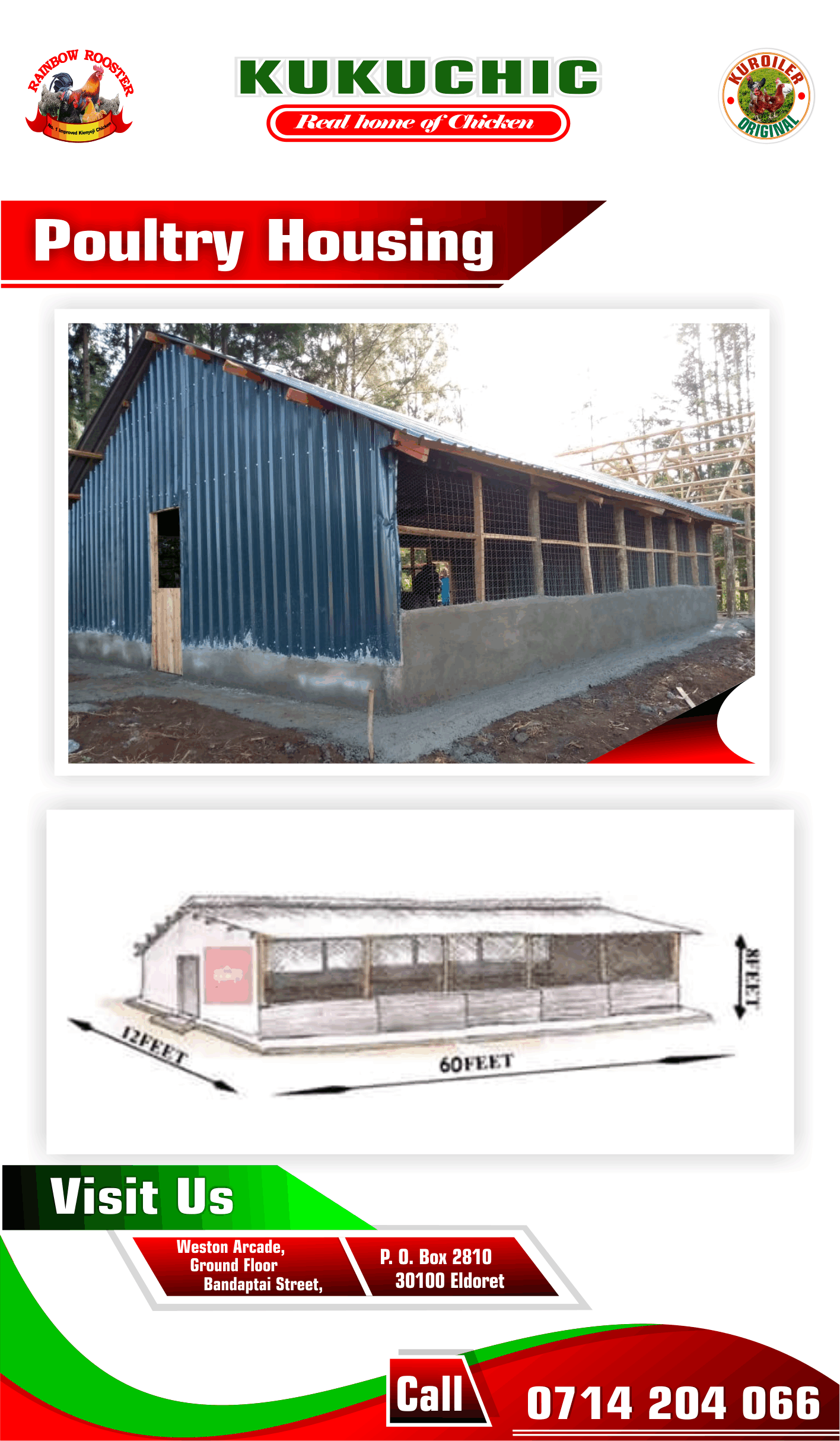Poultry housing is a consideration that must be made when deciding to venture into the poultry business. The following are the main importance of having a poultry house
- Protection from harsh weather conditions like strong winds, rain, and hot sun.
- Protection from predators
- Ease record keeping
- Easy feeding and general management
The house should be adequate for the desired number of birds, well ventilated and easy to clean. The floor covered with appropriate litter depending on house systems.
The nature and size of the house constructed will depend on factors like;
- Capital availability
- Type of birds
- Number of birds
- The climatic condition of the area
Design Consideration
- The house should have an East-West orientation
- Preferably rectangular
- Should have a height of 8 feet. The bottom 3 feet should be made of solid materials (timber, iron sheets, mud, stone wall). The remaining 5 feet should have kukunet for ventilation
- Wall(Timber,mud,stone,blocks,bricks,offcuts,ironsheets,papyrus,polythene) Floor-compact earthen or cemented with 4-6 inch litter material
- Roof-iron sheet, polythene or grass
- Install the foot bath at every entrance of each poultry unit
- For free-range and backyard rearing, you require the house for night shelter only
Factors to consider when selecting house location
- Select a well-drained ground
- Should be isolated from the main house where human traffic is minimal
- Consider security from theft, vermin's and pests
- In the case of two units, separate the units with 10m buffer distance between the houses
Stocking Density
Space requirement for deep litter system per bird
- 0 - 3 weeks 0.5sq feet
- 3 - 8 weeks 1sq feet
- 8 - 16 Weeks 2sq feet
- 16 weeks onwards 3sq feet
Free-range/backyard
- Free-range 1sq meter per mature bird (night shelter only)
- Backyard with supplementation 2 birds per square meter
Floor Bedding / Litter
- Should be 4-6 inches deep
- Should always be dry
- Remove wet patches promptly
- Change every three months
- Beddings could be wood shavings, rice husks, coffee husks, grass straws, maize stover, crushed maize cobs
Lighting
- Use natural light during the day
- No night lighting required for rainbow roosters
- Avoid direct sunshine entering the chicken house during brooding to minimize heat stress which leads to cannibalism, reduced appetite, diarrhea, suffocation, and possible death.
Nesting
- These are provisions for laying birds
- Use locally available materials eg buckets, old tires, buckets with litter material to prevent breakages. These are placed at the shorter ends of the chicken house i.e MUST be easily accessible.
- Commercial nests boxes (2ft length by 1ft width by 1ft height) for 10 birds each, should be made of timber. The top of the nest must be slanting.
Perches
- Use locally available materials like timber poles, plastic poles
- Height should be 1 ½ meter with 1feet difference between the poles
- 30 degrees angle
- VENTILATION
- Aid in aeration of the poultry unit since there is the production of ammonia gas which is hazardous
- Removes dust hence improves air quality
- prevents the spread of respiratory conditions
- Allows maximum lighting inside the house (light is important in egg formation, feed location and improves meat quality)
- There should be maximum circulation of fresh air
- The two longer sides of the house should be an open gable roof
- 5ft kukunet ¾ inch
- However, curtains are used during the night while brooding and in very cold areas.
Curtains should be fixed on the wall at the bottom and be lowered from top to bottom according to the required temperature and ventilation.
